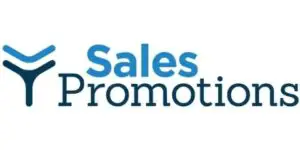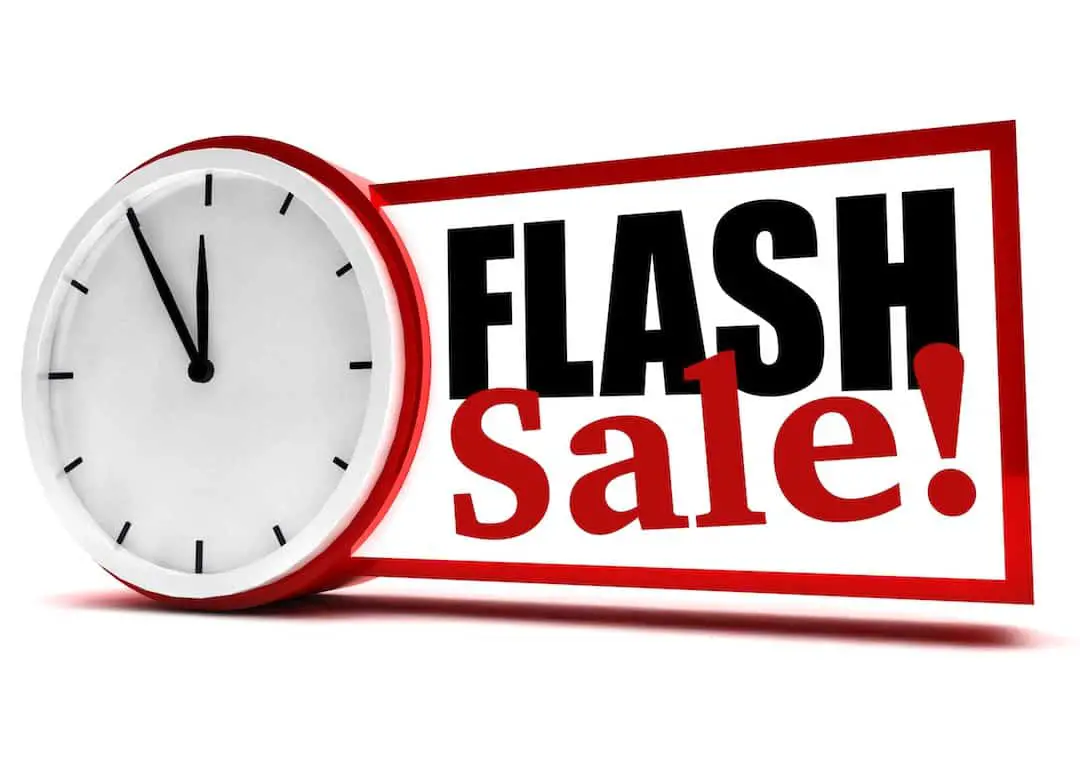Table of Contents
Can you still optimize a profitable flash sale in today’s business environment? Remember how flash sales and flash sale sites were all the rage ten years ago. It seems flash deals have slowly dwindled down in popularity due to changes in the business environment. We have identified these changes in this list.
*This post may contain affiliate links. As an Amazon Associate we earn from qualifying purchases.
Why Flash Sales Have Declined:
- The improved economy
- The inability of flash sale sites to offer excellent customer service, free shipping, and no-hassle returns
- Reduction in ‘exclusive’ product as manufacturers have realized they must use multiple channels to maximize opportunities
- The growth of Amazon and their use of algorithms to identify many similar lower-priced products within a search parameter
- Amazon’s and the other big retailer’s ability to make data-driven shopping suggestions based on related products, shopping patterns of similar customers, and the shoppers past shopping and purchase activity
- Improved inventory control due to an increased use of data-driven analytics in anticipation of what consumers will need and at what price point
Managing Profits In A New Retail Battlefield
Data-driven target marketing, increased profit margins, and improved customer loyalty are the primary objectives of retail organizations that are competing for survival.

The highly competitive retail market is rapidly playing catch-up to avoid being wiped out by Amazon’s dominance.
Retailer’s internal business environments have ramped-up using data to manage tight inventories. Product is manufactured and distributed to meet niche customer’s specific taste, needs and financial abilities. The process is not yet perfected, but the ‘change or die’ mantra is very relevant within the retail industry.
In an ideal retailer world, gone are the days where retailers offer overstocked merchandise during a flash of time ‘while supplies last’. With new data-driven strategies and a focus on narrowing target marketing efforts, flash sales may still have a positive effect on profits and loyalty.
7 Ways Flash Sales Optimize Retailer Objectives
1. Use Flash Sales To Improve Loyalty
The traditional answer to ‘what is a flash sale’ probably doesn’t instill building customer loyalty within the minds of marketers. Offering a product to a broad segment of customers at a deep discount for a limited time has proven to attract one-time deal seekers. This type of customer is generally loyal to finding the best deal and not to a specific retailer.

With improved analytics retailers are delivering highly targeted flash deals to their most loyal customers. This strategy establishes exclusivity and allows the retailer to reward and build upon customer loyalty.
Ideally, you should have more knowledge and/or data about your repeat customers. An exclusive flash deal brings them back into your store and/or site. Following in the Amazon footprint, your ability to make them feel special while featuring cross-sell merchandise is a path to additional profits.
If you are a small business, that doesn’t yet have analytical tools, you can still use this flash sale strategy. Creating an exclusive offer for your best customer segments gets their attention. Using direct mail, email or a targeted flash online offer is a good way to build an ongoing relationship. Regardless of the communication vehicle, always accompany the exclusive flash deal with cross-sell product suggestions.
Small business owners should consider getting into the analytics game. Here’s a link to an article detailing data solution services for small businesses.
2. Grow Your Customer Base With A Flash
Once you identify a loyal customer, unique demographic and psychographic data will begin to emerge. Using analytics, you may segment similar customers based on shopping patterns and other characteristics.

You can then use this data to excite and attract similar customers using a flash deal. When you offer a product at a flash deal price, it is a great opportunity to test other customer lists using a flash deal that creates a sense of urgency. It’s also a great tool to up-sell or cross-sell the newbies you attract.
There are many ways to implement this flash deal strategy. A low-tech way is to advertise your flash deal in a magazine, partner site or newspaper that reaches the target segment.
The high-tech way uses data-driven analytics to segment customers using clustering technology. Once you identify customer clusters, you can use the data to stimulate a visit with a flash deal.
Cluster technology is also effective in making recommendations for other products. You can use a recommendation engine to identify customer clusters from other data sources or to develop a social network analysis.
3. Increase Profits In A Flash
When there is data compiled on customer preferences there is an opportunity to use the Amazon model to make cross-sell and up-sell recommendations.
Before you launch a flash deal, consider developing your up-sell or cross-sell strategy. When you use data to identify and attract the right type of customer, you have a better chance of excluding deal grabbers.

Loyal customers appreciate your efforts to offer products that better suit their needs or enhance their life. When a customer believes that the cross-sell offer is a win for them, it builds upon the win/win business relationship.
For example, I recently purchased tires for my car. The service person strongly suggested that I buy the eight dollar insurance policy. This policy totally replaces a flat tire in the first year, with a sliding scale thereafter. I never buy these add-on policies. But the low price and the service person’s genuine concern had me adding eight dollars to my six-hundred dollar purchase. Sure enough, Eight months into my new tire purchase, I ran over a nail and received a brand new tire, no questions asked. Now I recommend this tire dealer to everyone.
A cross-sell strategy may be for an immediate purchase, or for a purchase in the future. I purchased a streaming speaker from Best Buy. I had also purchased a TV from this retailer in the past. Recently, I have been receiving offers from the retailer for a TV sound bar that connects with my brand of speakers and TV. I may just have to get that!
4. Celebrate Flashy Holiday Profits

Holidays have traditionally been the time when it seems everything goes on sale. While this may be a good way to attract customers, it may not make for a profitable season.
Consider creating many different flash sale events on many different dates throughout the shopping season, or the days leading to a holiday. Targeted flash online click rates are generally much higher than standard email click to open rates.
Keeping the flash sale offer availability short motivates immediate shopping involvement. It is estimated that 50% of a focused flash sale purchases take place within the first hour of the sale.
Improved customer targeting along with more opportunities to cross-sell throughout a holiday season increase sales of none on-sale items. This strategy is more akin to a loss-leader strategy executed as a flash deal.
5. Blaze New Event Strategies
Sales events such as Black Friday and Cyber Monday practically require retailers to offer a flash deal to compete. The low-priced, limited time offer has been the source of in-store consumer excitement along with some aggressive customer competition to grab at their chance to get the limited supply item.
The objective of these sales events is to attract customers and drive profits. Are there better ways of using your flash deal strategy?
Consider offers that increase the win for both customers and you, while not creating a short time, limited supply product frenzy around one loss leader product.

Buy one get one free (BYGO) or buy one get the additional product at a percentage off are examples of short-term offers that cross-sell offer is a win
A flash deal offer that rewards higher spending is also motivational as consumers seek opportunities to complete their shopping list and maximize their time and budget.
Recently, I was motivated to shop at Macy’s based on an Autumn season flash deal offer that rewarded my loyalty with a $20 cash voucher when I reached a spending threshold in one day of shopping during the specific week. The catch was the $20 could only be applied to the next week’s shopping experience.
Since Autumn coincides with my wife’s birthday and I needed a few things for myself, I complied and made two visits to Macy’s and probably spent more than I had originally intended.
6. Incentivize A Burning Need Offering Larger Purchases
Recently, I purchased a new home and was sent flash deal from home improvement site that I frequent for a limited-time flash deal on an entirely new kitchen.
Perhaps this deal was targeted to me based on cross-referencing my kitchen appliance and countertop search activity. And maybe they accessed public records of recent home sales. The marketing strategy used was bundling.

The ad showed the price of everything when bought separately and compared it to the bundled price flash deal that was offered for a limited time. This concept is similar to the technique insurance companies use where they bundle auto and homeowners insurance to deliver a different price.
Rather than sending me a flash deal for an individual appliance, the deal was for everything and the kitchen sink. When you work the numbers, the profit potential for a bundled package may be higher for selling one or two items at full price.
7. Flame Customer’s Needs With The Weather
Selling umbrellas during a rainstorm is a technique that’s been around since umbrellas were invented. Taking the age-old strategy to new levels works.
I moved to an area that is in a Hurricane prone region. As a new home-owner, the staff at the local Home Depot knew me by name. Apparently so did their online AI mind. When reports of a major hurricane began to alert the community, I received personalized emails and flash deals for generators, flashlights, and other supplies that would see me through a storm. Ultimately the local store sold out of these supplies the day the storm hit town. Scarcity and fear worked in this example. Regardless, I was grateful for the reminders and deals they offered as a person who never experienced a potentially devastating storm.

